Cheap or just cheap? Today I try my hand at a 75-euro soundbar from TaoTronics, where every inch in length costs an almost unbelievably cheap 75 cents. Analog and optical inputs, Bluetooth and a display – everything should be included in the TaoTronics TT-SK019. But is that even possible?
I mean, what compromises on technology, sound and workmanship do you actually have to make in order to get such a (almost silly) sum at all? Whether this will turn out well in the end, we will all see in a matter of time. Hearing – For my part, I was in any case enormously tense when the roaring meter trudged in here in the laboratory.
Unboxing and scope of delivery
Cardboard opened and eagerly unpacked: Sapperlot, it's really all there. The soundbar as such, a suitable plug-in power supply with almost 40 watts maximum power, a decent remote control, an optical cable, a RCA jack cable, as well as screws, plugs and spacers for wall mounting. You can leave it that way, especially since you get a printed manual for it.
Optics, haptics, functionality
The 1.01 metre x 6.4 centimetre x 7.9 centimetre stake consists of a plastic body in dazzling piano lacquer optics, with at least the front and top of the perforated metal covered in gun metallic. The sides are also both matte, which would also make you have something to touch safely. The rest is the personalized fingerprint record and the joy of each dactyloscope.
At just under two kilos, this black metre of sound furniture is not very heavy and bulky, but it still wants to be underord. But more on that.
The operation on the front panel is limited to the standby button, mute, as well as the volume. The IR remote control also offers the range selection for the analog, coax and optical input, as well as Bluetooth. As long as the soundbar is connected to Bluetooth, the player functions such as start/pause, before and then also work. The display is not very bright, but does what it should.
The back is dominated by the glossy surfaces, which is also very scratch-sensitive in addition to the preference for the finger collection. In addition to the panel used for the inputs, you can also see the two wall brackets and the required openings.
Here the manufacturer has thought cleverly, because in addition to the dowels and very long screws, two practical plastic holders made of foam rubber are also supplied to create the distance to the wall and to decouple the soundbar also acoustically. That's what I had for the first time and it fits.
The connectivity is sufficient, because you are fed up with entrances. SPIF, coaxial and RCA are on board, then the power connection for the plug-in power supply, the paint is ready. Bluetooth is wireless.
Amplifier power and power consumption
TaoTronics uses a fairly simple Class-D implementation with DSP, whereby the device is unfortunately denied height and depth control. I measured slightly more than 0.5 watts on standby, which should be equally due to the plug-in power supply and amplifier. While in average operation it was just under 10 watts, the peak values for the power consumption are a maximum of 26 watts on the primary side.
The 40 watts awarded will never be used as electrical power, on the contrary. Comparative measurements of the sound levels of similar soundbars with known power and power consumption suggest a maximum of 10 to 12 watts per channel, i.e. in about half. That is still a lot, but not what you are promised. So we have to make concessions here.
The next downside is the quite clearly audible background noise. However, the manufacturer seems to be well aware of the problem, because after approx. 2 seconds idle, the amplifier goes idle and the noise is gone. As soon as a signal is present, however, the noise with the power amplifier is suddenly back. Until next time.
This is somewhat concealed along this road, but it really is not nice. Which means that we have already had two severe limitations on the hitherto positive appearance with low performance and high ground noise. It's a pity, but there are also horse feet. You even had to reckon with that.
Measurement of the frequency curve
I use the analog input and a total linear output for the measurement without any external distortions. This is the most honest way, because it is a relatively close one to an objective assessment of the frequency progression. The inclined user can still best improve, i.e. salt and over-pepper. If there is the source, because there is nothing wrong with the soundbar itself.
Let's get to the new measurement in the first graphic. Although I have still standardized the frequency curve at 1 KHz to 0 dB, on the one hand it is possible to evaluate the overall course with all encores and frequency waste and on the other hand not quite loses the comparison possibility to previous measurements. But it is still different, because in the first graphic the smoothing is omitted. All of this looks clearly "more hibbeliger", of course, but also fits much better with reality. Because one thing is also clear: it does not exist, the ideal curve.
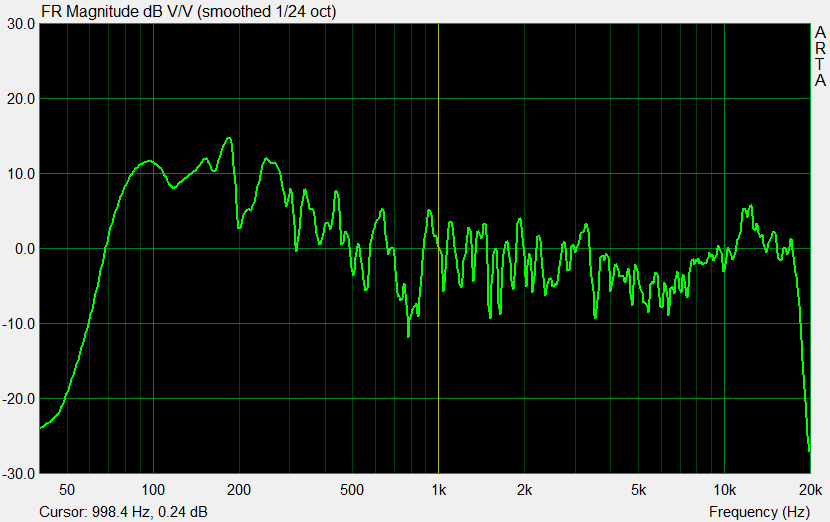
The second curve represents the same measurement, but smoothes the curve back as usual (as the PR likes to use). You can see the difference and everyone can now orientate themselves on what they prefer. Professional (above) or consumer looking for a rough clue (below)
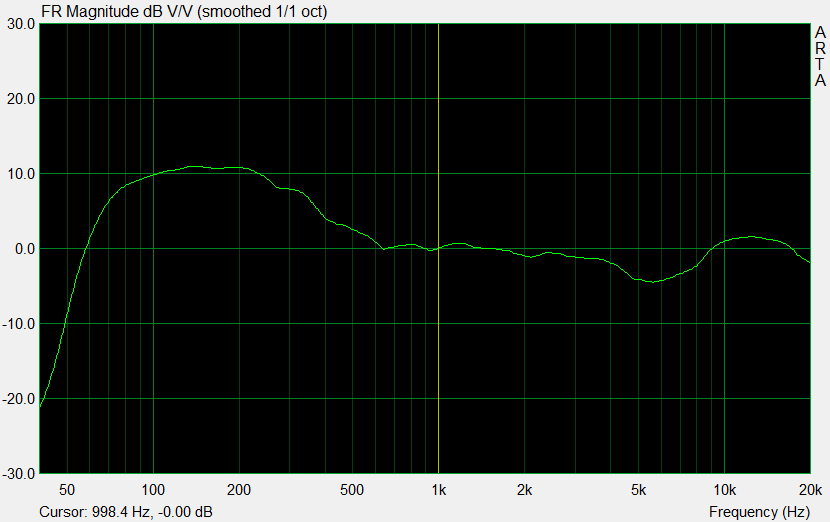
Soooo bad the curve doesn't look bad for a sloppy 75 euros. The two active speakers (one per channel) as well as one passive subwoofer play quite passably. Up to the lower upper bass everything is also grappled in the usual class, from approx. 70 Hz downhill, it then goes, also physically conditional, into the basement of the listening. The rest is surprisingly linear upwards, which I didn't expect at all. However, the normal listener is guaranteed to miss ups and downs. Listening habits can even be cruel companions.
Cumulative Spectral Decay (CSD)
The curves of the spectral decay analysis provide further very useful information about the performance of the installed drivers in combination with the mechanical execution of the box. This analysis is based on the frequency response diagram shown above, but also contains the element Time and now shows as a 3D graphic ("waterfall") very clearly how the frequency response develops over time after the input signal has been stopped. In colloquial terms, such a thing is also called "end" or "swingout".
Normally, the loudspeaker should also stop as quickly as possible after the input signal has been omitted. However, some frequencies (or even entire frequency ranges) will always subside slowly and then continue to appear in this chart as longer-lasting frequencies on the timeline. This is a good way to see where the chassis might be particularly "squeaming" or where resonances (also and especially in the chassis) can occur and disturb the overall picture.
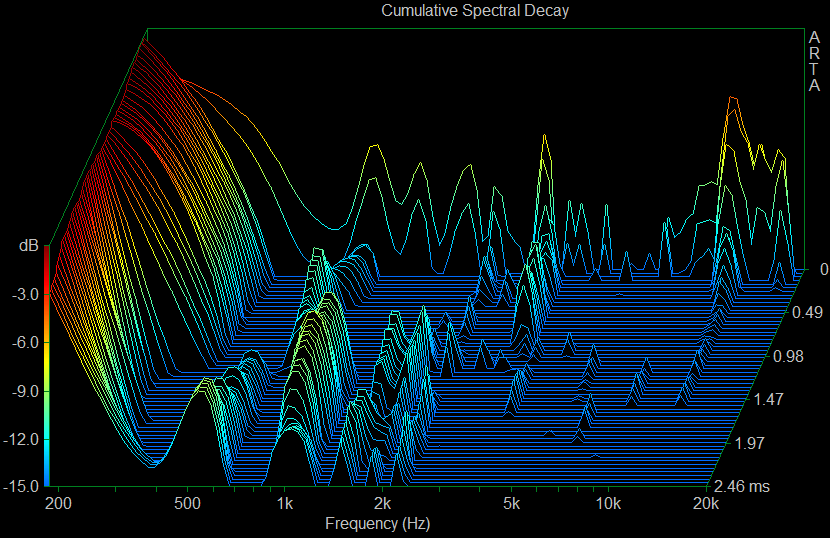
What we see is a fairly cooperating case from the middledown down to the lower middles and the upper bass. Plastic in ecstasy so, but to be expected. The high-frequency range, on the other hand, is surprisingly perfect.
Subjective hearing impression
First of all, let us assume the optimal location, i.e. the wall and spacers. The whole vehicle does not even act badly for the size, but due to performance somewhat missing the big levels. If you connect the TV analogly, you should try to regulate ups and downs on the TV, at the headphone output this usually works. Then you can add some height foam and deep cleaning.
Bass
The bass is absent. Logical. The contraoctave (32.7 to 65.4 Hz) is in parts from approx. 50 Hz still present, but the subcontraoctave (16.4 Hz to 32.7 Hz) is completely missing, which is due to physics and technical implementation. It just doesn't work, you have to reckon with it and live with it.
The upper bass up to 150 Hz, in which also the Great Octave (65.4 to 130.8 Hz) is located, exists and is supposed to replace subjectively by means of greasing what is missing as a foundation below. The idea is industry-standard, but only partially works. Music is tolerable, but voices, especially male ones, are well pronounced. at least.
Frequency range
The lower mids (also called the basic tone range) are approx. 150 to 400 Hz. Together with the already mentioned upper bass, this area plays a very important role for the subjectively perceived heat or bass. Fullness of the sound. The basic language frequency of female voices can be found in this area – also quite successful and also not as overemphasized as just as with the gentlemen. The upper mids up to about two kilohertz are also reproduced quite cleanly and almost linearly.
High-pitched range
Between two to about 3.5 KHz, human hearing is most sensitive, especially since this range of the lower heights is responsible for the good overtone reproduction of the human voice. This frequency range is crucial for the recognition of a voice or instrument; in this context, one also speaks of the respective timbre. Here we find no grounds for complaint, astonishing. You can really listen to it.
The middle heights (3.5 to six KHz) decide on the sound or failure of the speech reproduction as a whole, because the S- and hissing (Sibilants) fall into this range. The slight dent at approx. 6 KHz lets the Sibilants step back into the background, which sounds rather warm and not metallic. This interpretation is actually quite ok. The upper heights and the super high tone are then up to approx. 13 KHz has been raised a bit, which is a way to get into the mainstream, but also not get it wrong.
Conclusion and summary
In the end, it's not THE P/L bomb par excellence, where you get the maximum profit payout already for lukewarm. The basic noise (which cleverly turns itself off if you could perceive it in the absence of a signal) and the fake with the twice as high amplifier power thwart a buying tip here. You have to be so honest.
But it is nevertheless a price-performance cracker, if you just need a Tröt-Meter for the balcony, because the acoustic-rödel installed in the flat-TV gives the bad Grotto-Olm. Then it is the new birth, even if the real sip at the soundbar could go even more high. Here, depth, brilliance and a few playing possibilities for the sound are missing.
And otherwise? You can already spend 75 euros on this, despite the small shortcomings. Because the part was allowed to show at 30 degrees and in the blazing sun over six hours outdoors how durable it is. By the way, the soundbar still works, only the ears demand variety. Which closes the circle, because more than a nice and very connected option, none of this is.
Technical data and manual
We have summarized the technical data in a table:
| Speakers |
|
|---|---|
| Principle: | Active 2.0 speaker system as soundbar |
| Chassis: | Broadband, no further details |
| Subwoofer: | Passive membrane |
| Crossover: | No |
| Frequency range: | No information |
| Output: | Eel 2 x 10 watts (40 watts manufacturer's specification) |
| Body: | Plastic |
| Connections: | Digital TOSLINK connector, coax, RCA (analog) |
| Bluetooth: | A2DP standard for wireless digital signal transmission (from BT 2.1) |
| Operation: | Infrared remote control for all control functions |
| Weight: | Eel 2 Kg |
| Power consumption: | 0.5 watts (standby), 10.4 watts (average), 25.8 watts (peak) |
| Price |
from approx. 75 Euro on Amazon |
For the curious, we also have the manual available as a PDF:
User-manual-3841437















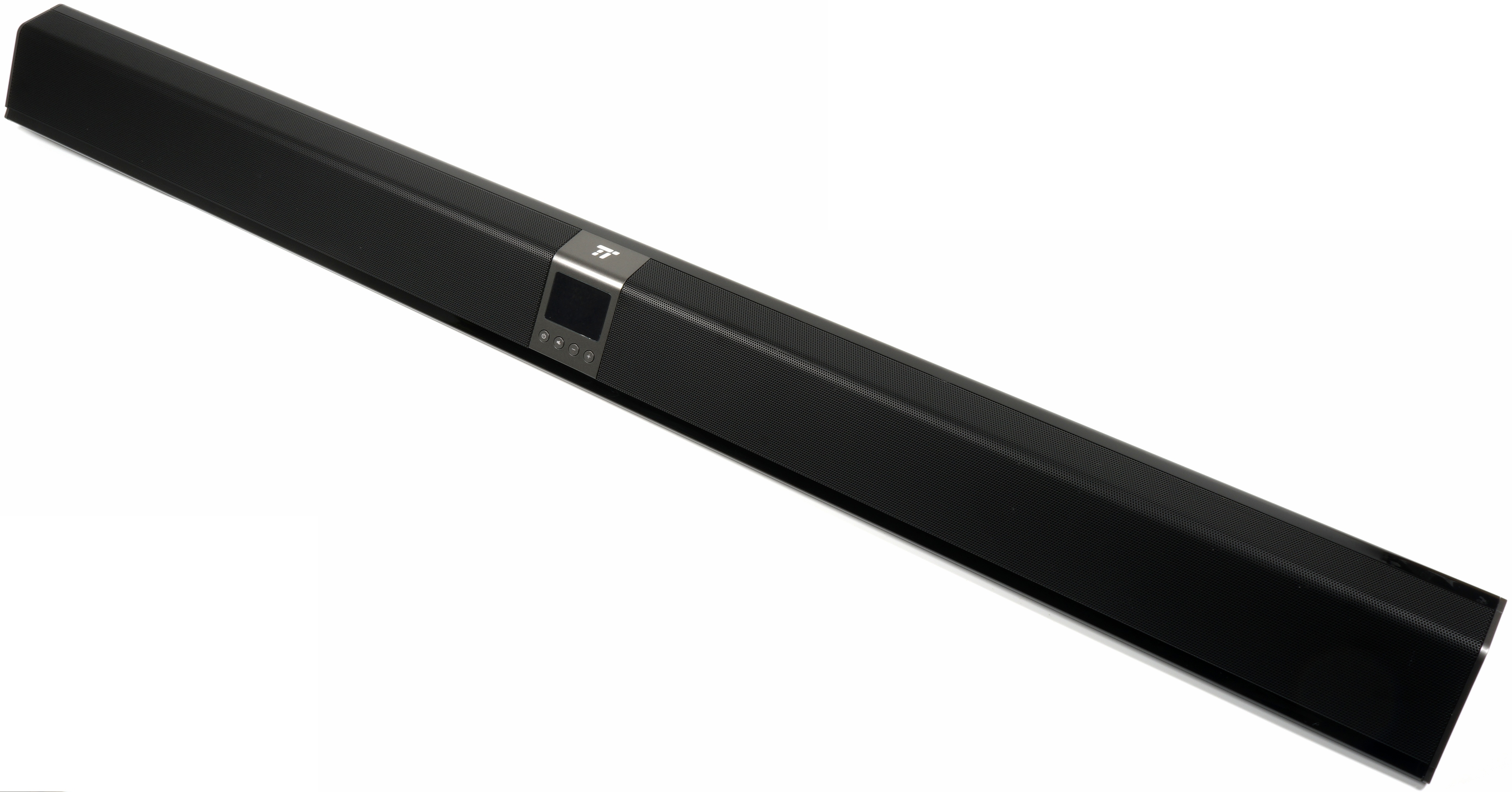
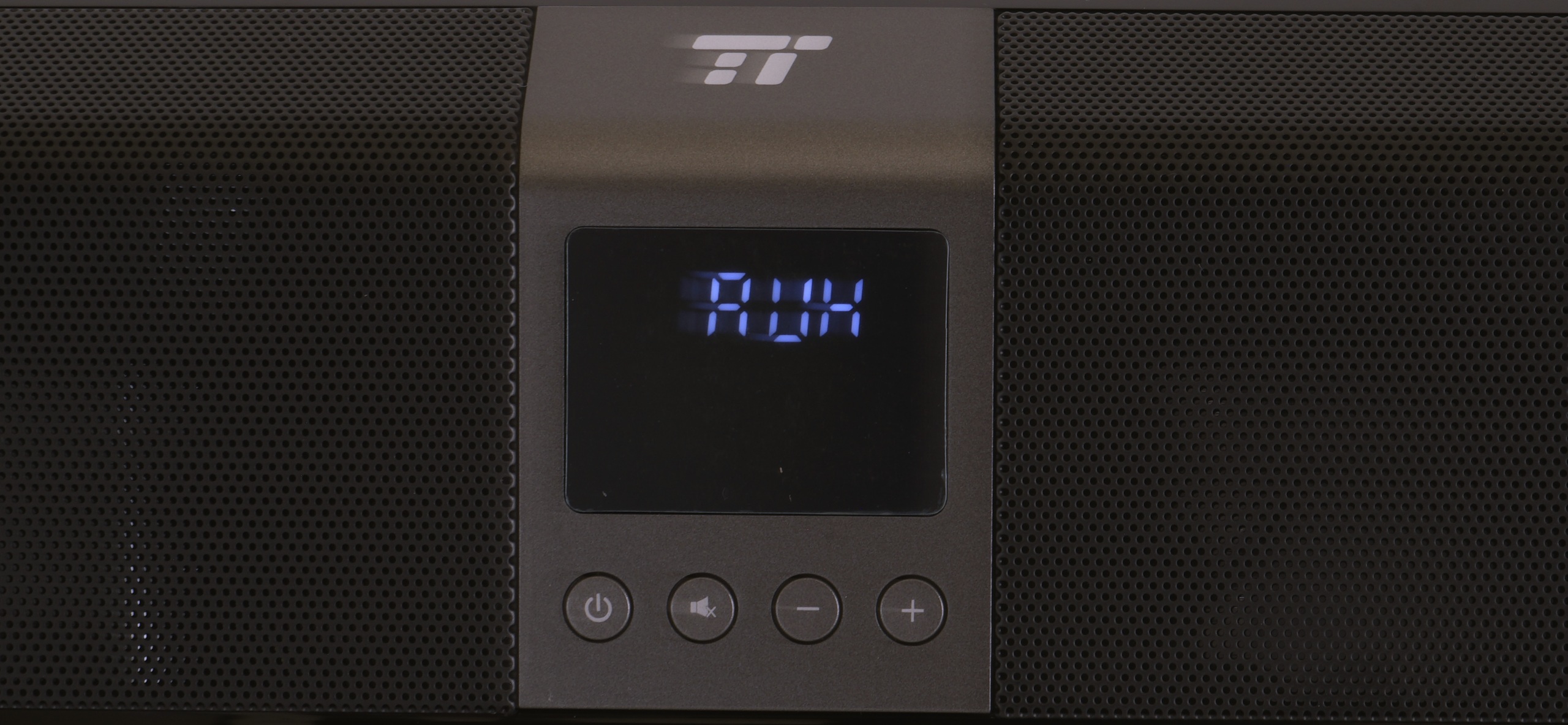




















Kommentieren